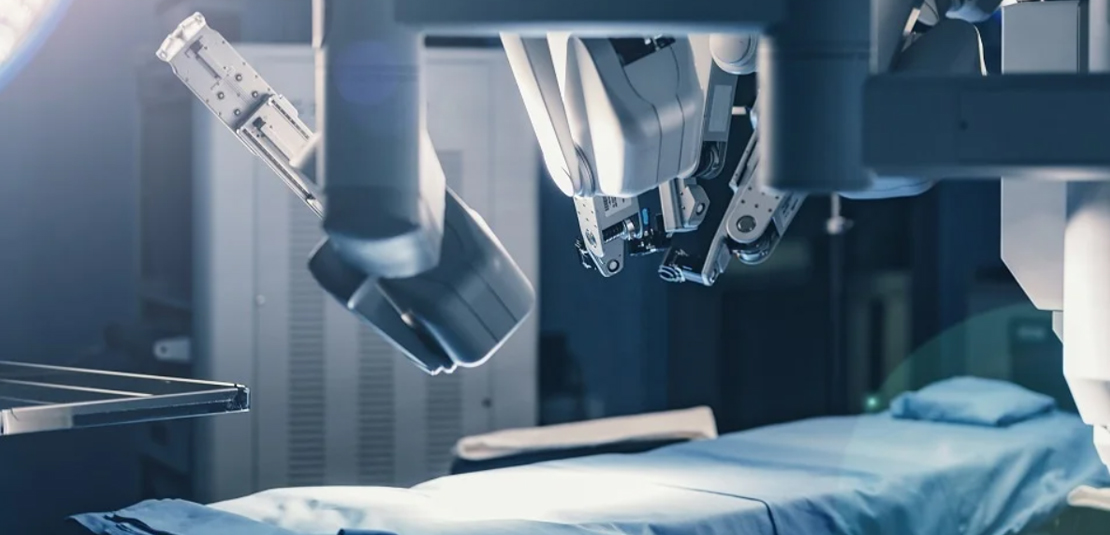

Medical robotics devices have completely changed the healthcare sector since they first started to appear in the 1980s. With the introduction of robotic arm technology in surgeries, the market for robotic surgical instruments was formed. Since then, the use of robotic medical equipment has expanded to a variety of other applications with the advancements in artificial intelligence (AI) and distributed systems. During the COVID-19 pandemic, healthcare experts used medical robotics devices to reduce human exposure to disease pathogens.
Robotic surgery has a bright future, with virtually limitless potential to advance surgical methods and patient outcomes. The growing use of robotic surgery systems that have received worldwide and U.S. Food and Drug Administration (FDA) approval is not surprising given the potential that medical robotics technologies carry. Medical robots are becoming more and more prevalent in the healthcare sector as a result of the application of technology and AI in the sector.
Robots can assist humans in finishing activities faster, more accurately, and even by enabling them to perform tasks that would be otherwise impossible. The burden on caregivers brought on by population growth, mental health epidemics, aging populations, and rising healthcare expenditures is also lessened by this autonomous technology.
The primary categories of robotics that are now being utilized to raise the level of care in hospitals are
Particularly for surgical interventions requiring high degrees of precision, the surgical robots market has a lot of potentials. Major manufacturers are strengthening their robotic surgical system research and development (R&D) activities. Intuitive Surgical presently dominates the market as a whole, but things are gradually changing. The market for MedTech surgical robotics is growing mainly because of key manufacturers.
Considering the aging global population, the dispersion of extended families, and the demand for social welfare funds, care robots can significantly reduce the cost of nursing elderly people. Currently, only a few robots are used to care for and support elderly and disabled patients, but over the next few years, this number is likely to rise dramatically.
Advantages of Medical Robotics Devices
Robotic surgery has a bright future and offers several advantages, such as:
Robotic surgery techniques are less intrusive than conventional surgical procedures, which required big incisions to provide surgeons complete access to the patient's body area that required treatment. This made healing more challenging and increased the patient's risk of infection. Smaller incisions are possible because of medical robotics technology, which limits bacterial exposure and promotes fast healing.
Because no robot is really performing the surgery, the term "robotic surgery" is somewhat misleading. It is carried out by a skilled surgeon using robotic medical equipment. Because they do away with human natural tendencies like unsteady hands and muscle spasms, these technologies offer more precision.
A surgeon may already execute an operation from another room because of medical robotics technology. The long-term objective is to enable them to do the surgery from any location in the world. Patients would then have access to the top surgeon for their specific surgery, regardless of where they were located. Additionally, it would enable the performance of life-saving operations in underdeveloped regions of the world with inadequate medical assistance.
Challenges in Medical Robotics Devices
Robotic medical equipment has many advantages, but they also have significant drawbacks. As medical devices become extremely advanced, so do cyber-attacks on them. A device is susceptible to possible cybersecurity risks if it has the software. In the healthcare sector, which has long been the target of cyberattacks, the risk is considerably larger. Virtually hard to entirely remove threats and vulnerabilities.
Also, Implementation Surgeons will need to receive special training and modify their procedures to use robotic surgical tools. Even with all its benefits, it can be challenging to shift to and adopt a new mindset, especially for a surgeon who has spent their entire career using more conventional methods.
By giving medical professionals the necessary cutting-edge equipment, hospitals can drastically prevent unfortunate incidents. Codex Solutions is dedicated to providing Medical Equipment in India and transforming hospitals into the best places for patient care.
Codex Solutions is a leading Hospital Equipment Manufacturer in India. We offer DVT Pump, DVT Stocking, and Alternating Pressure Air Mattresses in India. The product's strength, durability, and long functional life are all indicators of its high quality and aesthetic look. We are working to deliver the best outcomes to fulfill the growing need of Medical Equipment Manufacturers in India.